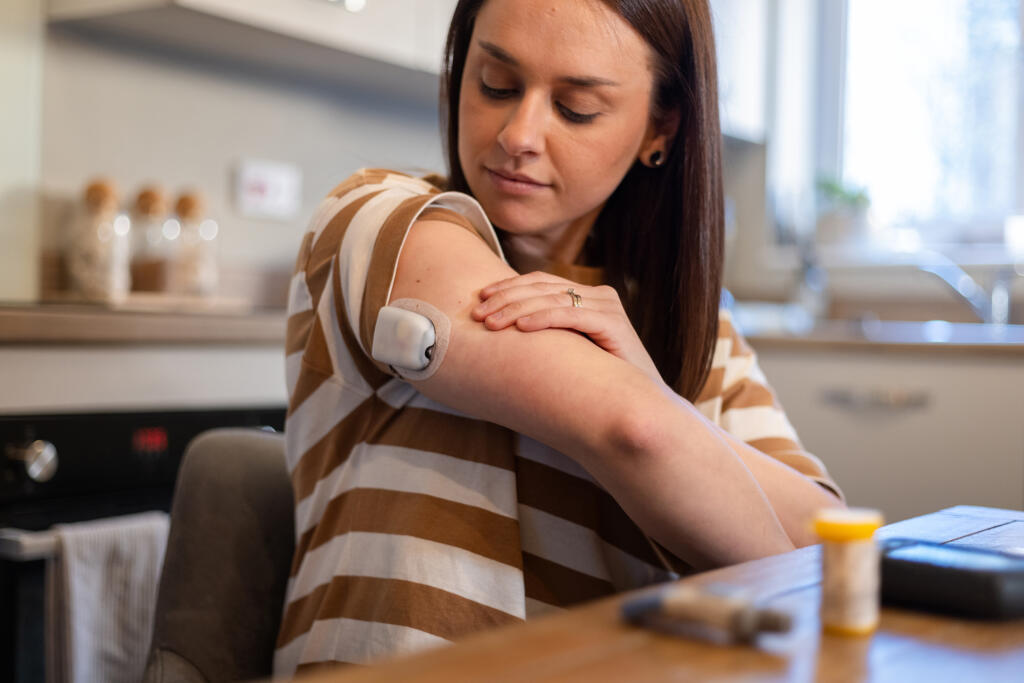Insulin
How insulin works and the types of insulin therapy
Insulin 101
People with type 1 diabetes (T1D) need to take insulin to survive. This is because their bodies make very little of it. Insulin is a treatment for type 1 diabetes. It is not a cure.

How does insulin work?
Insulin is a hormone produced by beta cells in the pancreas that helps regulate blood-sugar levels.
Your body breaks down the food you eat into glucose and releases it into your bloodstream. Insulin is the “key” that unlocks the cells in your body to allow that glucose to enter and be used for energy. Without insulin, or enough insulin, glucose levels in your blood rise.
People living with T1D don’t produce insulin. Therefore, they must rely on insulin therapy to manage their blood-glucose levels.
Types of insulin therapy
The type of insulin a person with T1D uses is based on the individual. You and your healthcare provider will work together to develop a personalized course of insulin therapy. There are three standard insulin regimens:
Multiple Daily Insulin Injections (MDI)
Two types of insulin are typically used for multiple daily injection insulin therapy:
- Basal, or long-acting, insulin starts working about an hour after injection and tends to lower glucose levels for 24 to 40 hours, or almost a full day.
Examples: insulin glargine (Lantus, Toujeo) and insulin degludec (Tresiba) - Bolus, or rapid-acting, insulin is administered at mealtimes and to manage high glucose levels. Rapid-acting insulin starts working about 15 minutes after administration, peaks (or is at maximum effectiveness) in about 60 to 90 minutes, and continues to work for 3 to 5 hours after administration.
Examples: insulin glulisine (Apidra), insulin lispro (Admelog, Humalog), insulin aspart (NovoLog, Fiasp), and insulin lispro-aabc (Lyumjev)
Insulin Pumps And Automated Insulin Delivery (AID) Systems
Rapid-acting insulin is used in insulin pumps and automated insulin delivery (AID) systems, also called artificial pancreas (AP) systems. Rapid-acting insulin starts working about 15 minutes after administration, peaks (or is at maximum effectiveness) in about 60 to 90 minutes, and continues to work for 3 to 5 hours after administration.
Examples: insulin glulisine (Apidra), insulin lispro (Admelog, Humalog), insulin aspart (NovoLog, Fiasp), and insulin lispro-aabc (Lyumjev)
Fixed-Dose Insulin
Fixed-dose insulin therapy typically uses short-acting or rapid acting in combination with intermediate-acting insulins.
Short-acting insulin starts working 30 minutes after injection, peaks anywhere from 2 to 3 hours after injection, and continues to work for about 3 to 6 hours.
Example: Human Regular
Intermediate-acting insulin starts working 2 to 4 hours after injection, peaks about 4 to 12 hours later, and lasts approximately 12 to 18 hours.
Example: isophane (NPH insulin)
Fixed dose insulin regimens may also include premixed insulin.

Administering insulin
There are four primary methods for administering insulin: injections, inhalers, pumps, and automated insulin delivery systems.
Caring for insulin
- Refrigerate unopened insulin
- Store opened insulin at room temperature and never near extreme heat or cold
- Check insulin expiration date before using
- Discard expired insulin or insulin that has discoloration or particles
- Discard opened vials or pens as recommended by the manufacturer
Insulin resistance and type 1 diabetes
Insulin resistance is often associated with type 2 diabetes (T2D), but people with type 1 diabetes can also struggle with the condition.
Learn more T1D basics
The science behind T1D
Therapies for treating type 1 diabetes
Get the facts about living with T1D